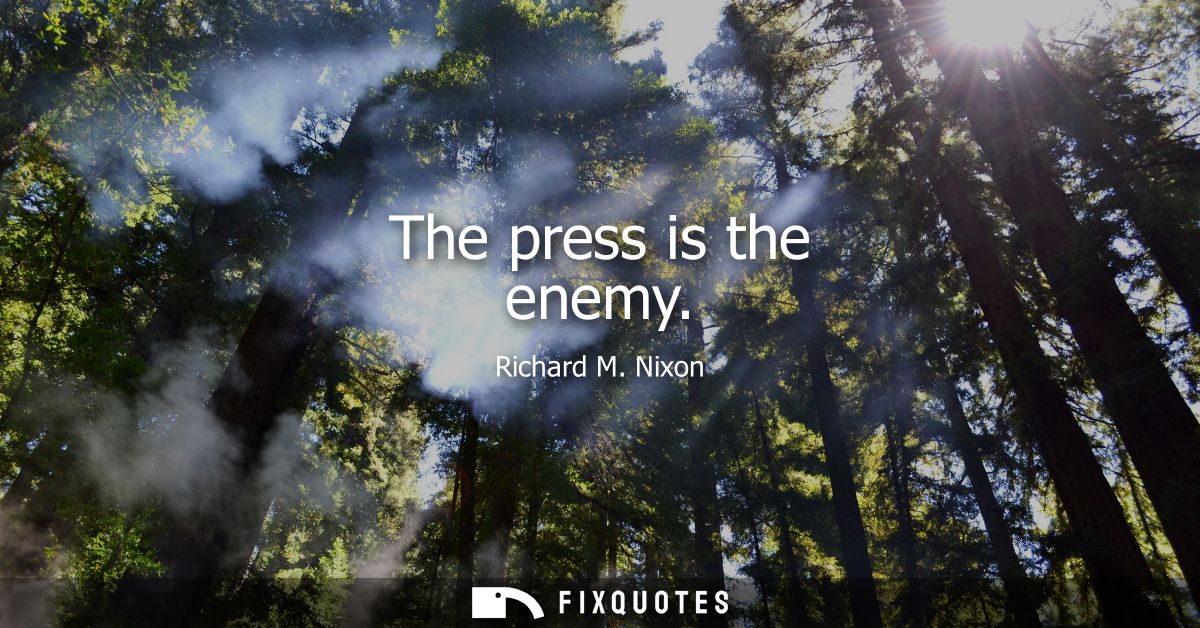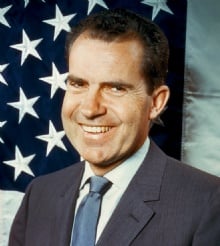"The press is the enemy"
About this Quote
Richard M. Nixon’s assertion, “The press is the enemy,” conveys a deep-seated suspicion and adversarial attitude toward the media’s role in society. Nixon’s presidency unfolded during an era of considerable scrutiny, particularly with the Vietnam War and the unfolding of the Watergate scandal. His relationship with journalists was fraught and tense, stemming in large part from the relentless investigative pursuits and critical reporting that characterized media coverage during his administration.
The statement frames the press not merely as a watchdog or a check on government power, but as an outright adversary. It encapsulates a perspective in which the news media is seen as hostile, possibly threatening to undermine authority, disrupt official narratives, and endanger reputations or initiatives through exposure or criticism. Instead of viewing journalism as a vital component of democracy, upholding transparency and accountability, Nixon’s words suggest an environment where the work of reporters is perceived as antagonistic and even detrimental to governance.
This sentiment reflects broader anxieties about the relationship between state power and public information. Leaders who feel besieged by negative coverage may come to see the press as a destabilizing force, one that shapes public opinion in ways beyond their control. In Nixon’s case, the adversarial relationship was only heightened by the leaks and exposés that eventually contributed to his resignation from office. The phrase has since entered political discourse as a shorthand for the belief that the media’s motivations are inherently oppositional, and it’s employed by later figures who seek to discredit unfavorable news coverage.
At its core, Nixon’s statement evokes the perennial tension between power and scrutiny. It raises critical questions about the nature of truth, dissent, and the health of democratic institutions when those in authority equate oversight with hostility rather than considering it an essential feature of good governance.
More details
About the Author

